
Edinburgh Airport
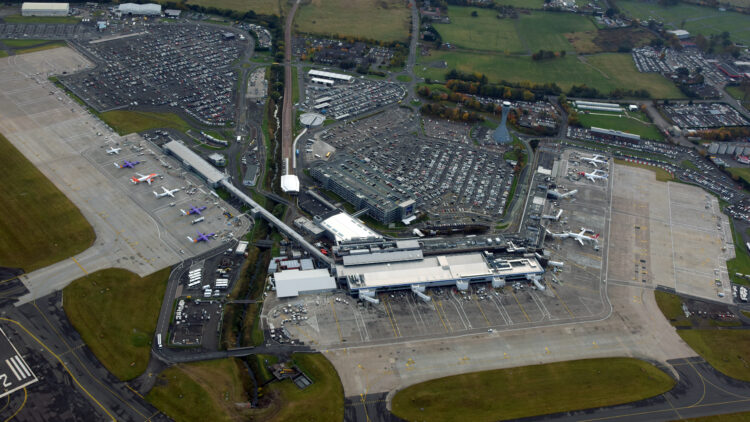
Overview
As part of Edinburgh Airport’s 2040 development masterplan, the airport is expanding to accommodate increases in passenger numbers, increased freight traffic and long-haul air routes.
It is essential that, during heavy rainfall, stormwater drains as quickly as possible from the new 75,000m² concrete pavement area created as part of the Stands Development. Due to their location away from the main airport terminal, passengers will be transported by bus to and from the stands. With aircraft operations, service vehicles and passengers on foot, effective flood-free drainage across the entire pavement area is essential to ensure the airport can continue to operate efficiently and without interruption.
SDS was tasked to effect the fast and efficient removal of surface water from the site and to ensure its safe dispersal to natural water receptors. As well as mitigating anticipated flooding issues as a consequence of the airport’s expansion, this involves minimising the airport’s impact on the environment, while satisfying the environmental demands of the West Edinburgh Strategic Design Framework (WESSDF).
What we did
Surface water, predicted to run off the newly-created impermeable surface at flows of up to 3,000 l/s, must not be allowed to discharge into receiving natural water bodies surrounding the airport at a rate that could cause environmental damage or flooding. Instead, it is collected via a gravity network of heavy-duty slot drains and a 660m-long run of 1,500mm diameter pipes, before being fed, via a single 1,500mm pipe, to the SDS GEOlight® attenuation system.
Installed approximately 20 metres to the south of the new stands area, the GEOlight® tank, measuring 72 metres long, 32m wide and 3.25m deep, is designed to hold back almost 7,000m³ of surface water during heavy storms. A number of oil interceptors are positioned along the gravity network to clean the water before it enters the GEOlight® tank.
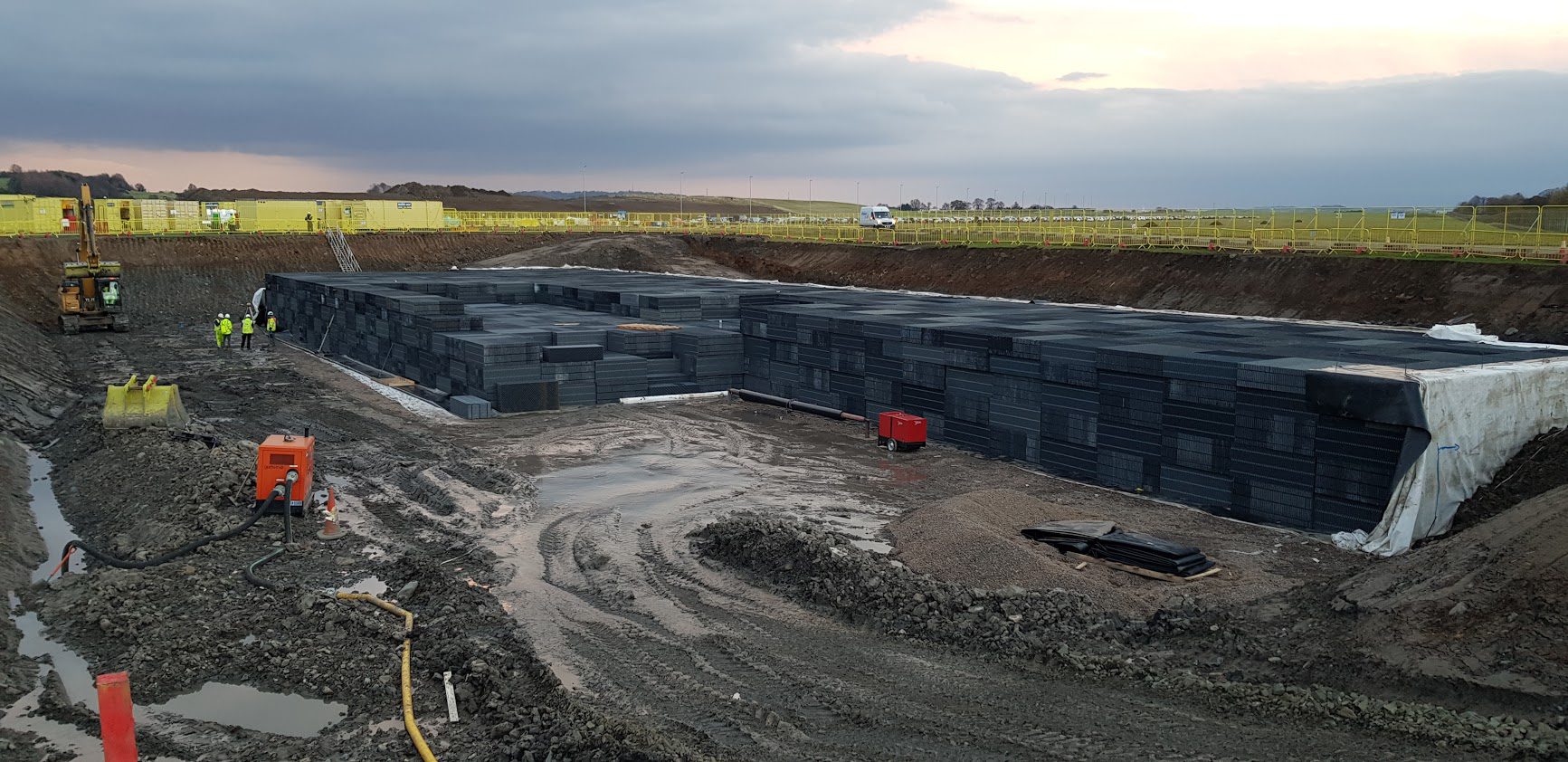
What we did
A pumping station carefully controls the amount of water leaving the tank so that discharge into the Gogar Burn, which runs along the airport perimeter and eventually into the River Almond, is limited to 110 l/s, the maximum flow rate permitted by the Scottish Environmental Protection Agency (SEPA).
In time for winter 2019 and anticipated freezing weather conditions, Careys have constructed a system to hold surface water collected in the SDS GEOlight® tank if a sensor detects that it is contaminated with Glycol anti-freeze. The polluted water would then be diverted into specially-designed storage tanks, where it would be collected and correctly disposed of.
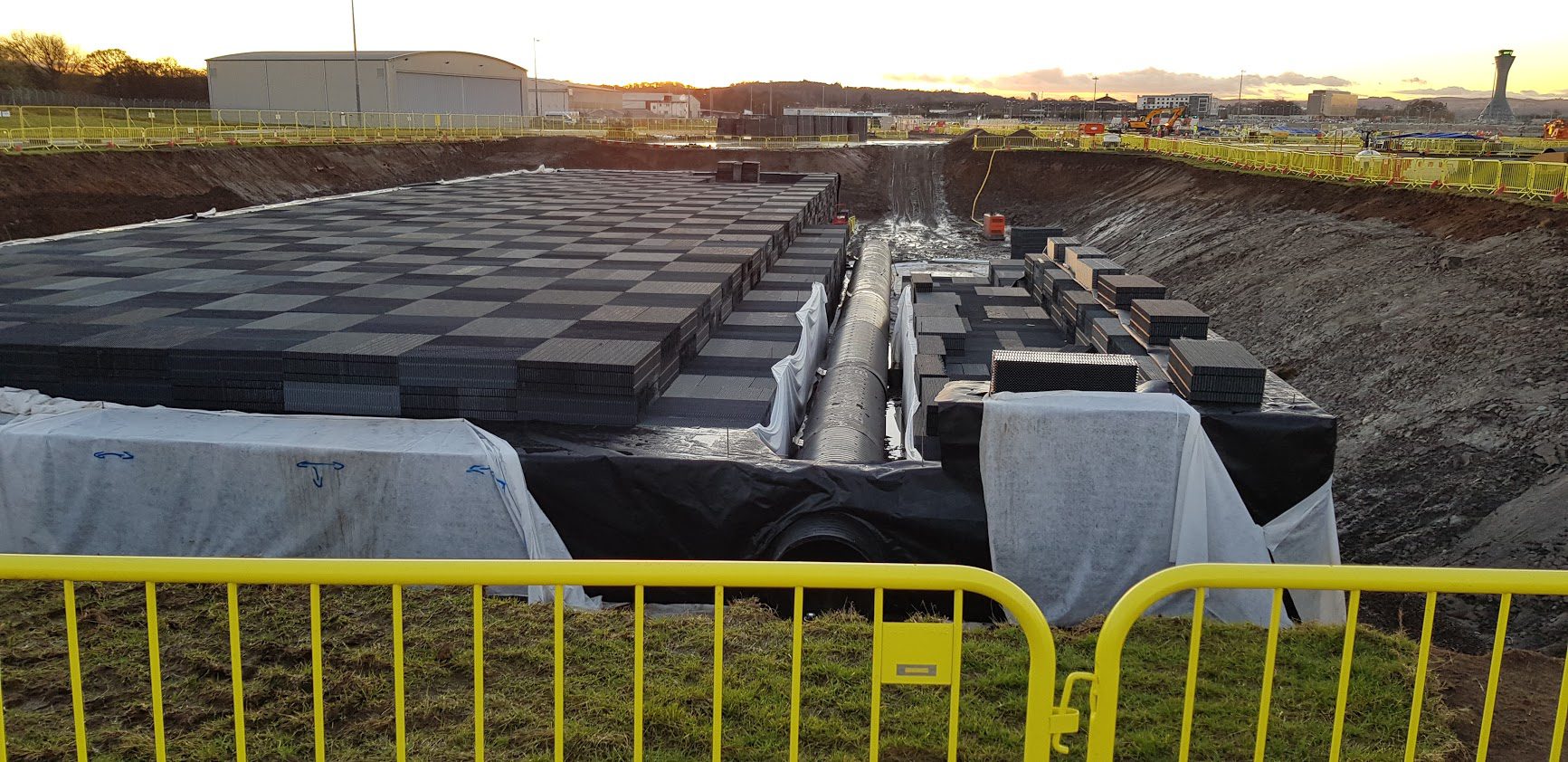
Results
Selecting the right design for a tank of such large proportions was the first challenge to overcome. Given the size, the only potential solutions were either a concrete tank or modular crate storage. Installing a concrete tank would, however, have posed significant civil engineering challenges. With a tight programme, specifying SDS modular storage offered the advantage of both buildability and speed.
SDS worked on the tank design with consulting engineers Amey to optimise the strength and durability of the tank during its design life. With good ground conditions of sandy clay, Careys was able to prepare the excavation, measuring nearly 100m x 50m at ground level, ready for SDS to install the tank.
The SDS team were totally self-sufficient and extremely slick. They are the experts and were able to complete the installation within 7 weeks, with both speed and skill.
– Allan Crozier, Senior Project Manager, P.J. Careys
Real world impact
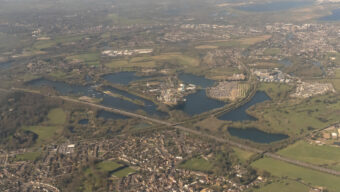
M3 Junction 2, Surrey
SDS Aqua-Xchange™ prevents pollution of water bodies adjacent to London-bound M3 motorway
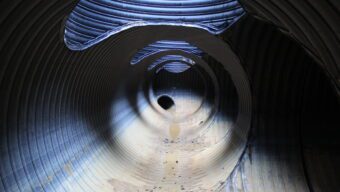
Holywell Row, Suffolk
SDS stormwater storage system brings to an end years of flooding endured by villagers.

Howden, Yorkshire
SDS addresses the impact of the town’s expansion on surface water control.

Need advice or a quote?
Please contact us to discuss how SDS might meet your project’s requirements.
Get in touch